The business case for social impact
How Cisco proved the business value of workplace giving programs
October 22, 2024
Key insights
![]()
Cisco took a business transformation approach to supercharge employee participation rates in their social impact programs.
![]()
The company surpassed 80% engagement globally with a three-part strategy: make it inclusive, lean into digitization and follow the data.
![]()
A three-year longitudinal study found Cisco employees who gave back through their social impact program stayed at the company longer, had higher bonuses, had higher odds of being promoted and received more peer recognition.
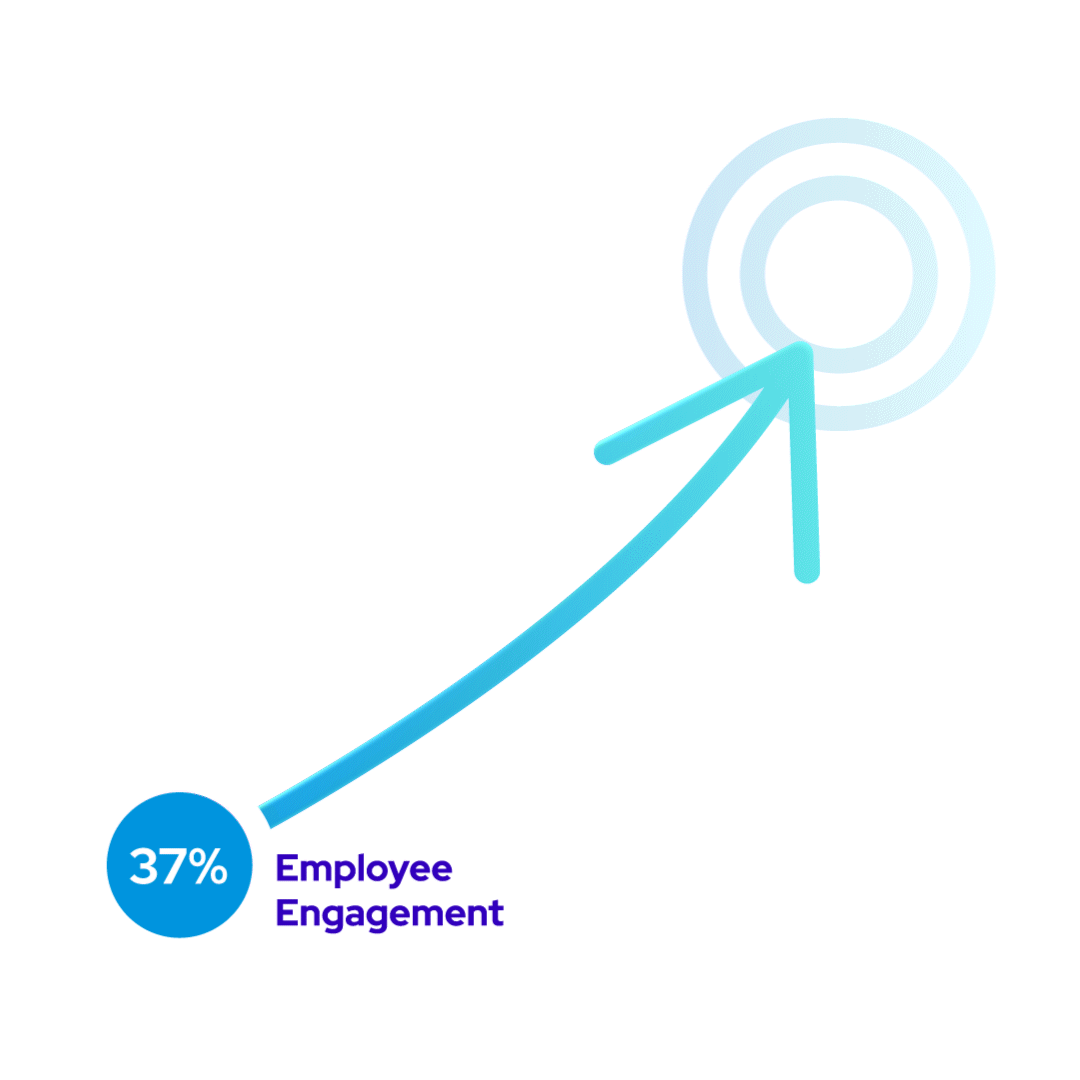
When tech giant Cisco set an ambitious social impact goal to get more employees than ever involved in giving back to their communities, the company didn’t know it would turn out to be one of their best business decisions.
The goal: Leapfrog from a 37% employee engagement rate in the company’s social impact programs to achieve 80% engagement annually — and do it in just four years.
Cisco was well-positioned to push their limits. A purpose-driven company with transformation in their DNA, they helped to build the Internet in the 1990s.
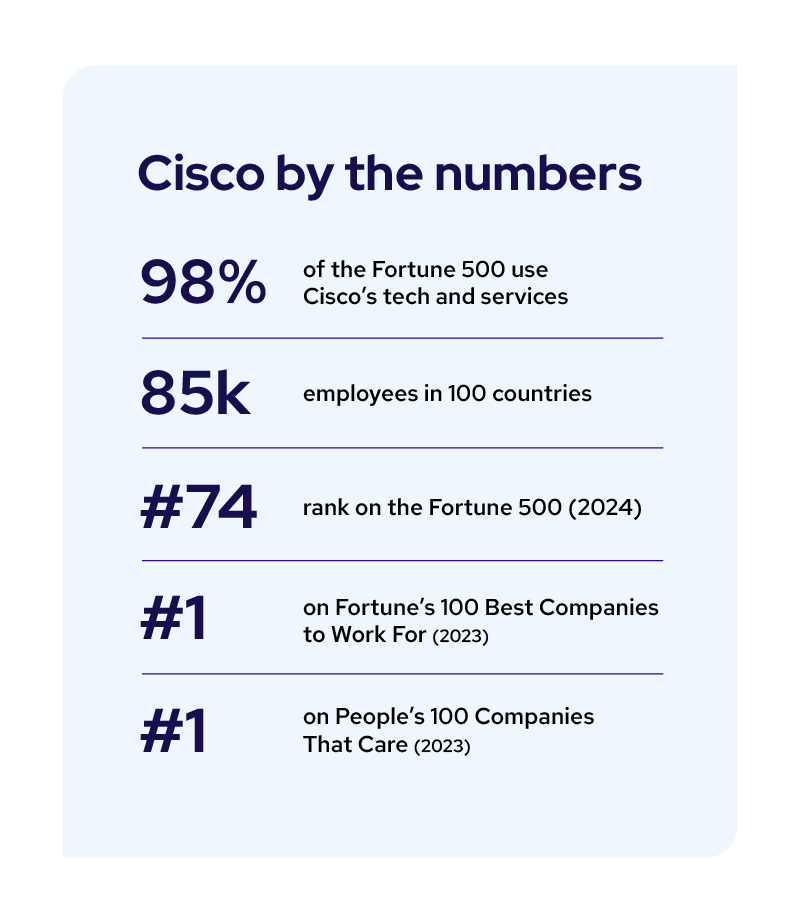
In 2016, when the company set an 80% engagement goal for their social impact programs, they applied some of their most important business learnings to drive up participation rates in giving and volunteering.
Right on target, Cisco hit 81% global employee engagement in 2020, with an incredible 162% growth in volunteer hours and 175% growth in combined employee donation and matching gifts. And they kept on going. In 2022, the company partnered with Benevity and has since scaled participation even higher — reaching 86% in 2024.


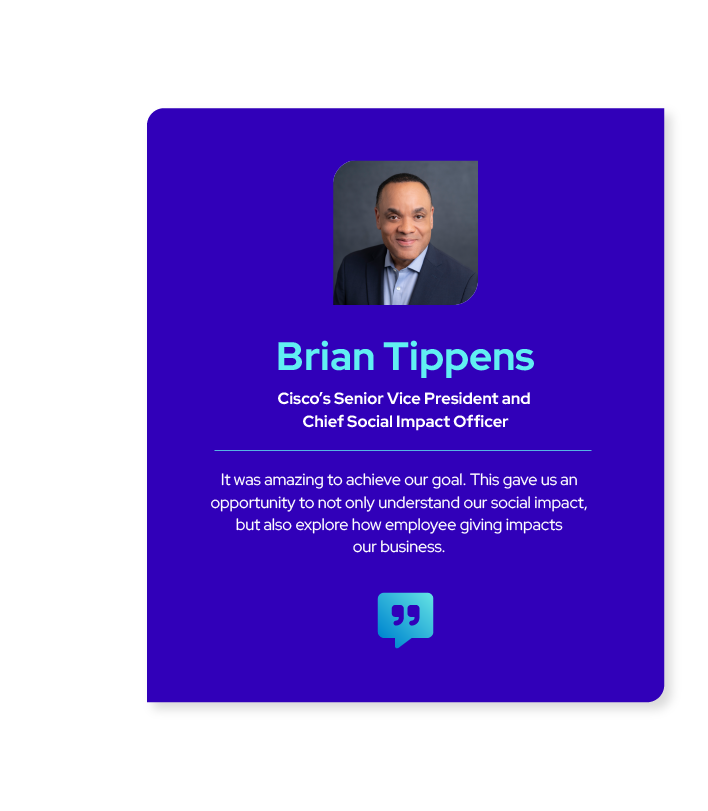
The eye-opening results showed that people who got engaged in social impact through the company’s programs realized greater benefits for themselves and the business, compared to those that didn’t.
These findings align with Benevity’s Talent Retention Study, which uncovered the link between participation in social impact programs and employee retention. The study analyzed data from 10.6 million users at more than 400 companies on the Benevity platform, with a focus on people who had been with their company for 2.5 years or less. It revealed companies see a 52% lower turnover among newer employees when they participate in purpose programs.
Cisco’s analysis uncovered an important point for leaders in particular about the power of engaged leadership and peer participation:

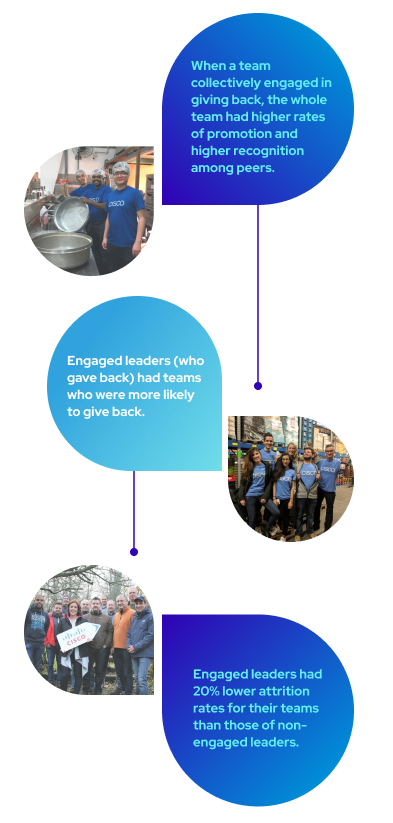
Every business leader knows the value of long-term employees and the high cost of staff turnover in terms of time, money and morale. Engagement isn’t just good for the community – it’s good for every aspect of a business.
Employees value purpose at work
When employees find a sense of purpose through their work, they’re more likely to stay and to succeed. But employee engagement isn’t the default position, according to Gallup's State of the Global Workplace: 2023 Report, which found only 23% of the world’s workforce is engaged in their work. Rather, it’s an experience created by organizations, managers and team members.
Gallup found teams scoring in the top quartile on employee engagement saw 10% higher customer loyalty and 23% higher profitability compared to bottom-quartile teams.
Transforming into a company where employees can show up for, and support, the causes and issues they care about is a win-win in the 2020s. People are increasingly looking for more purpose and meaning at work, especially Gen Zers who now make up 25% of the workforce.
According to 2022 research from McKinsey, 70% of employees said their personal sense of purpose is defined by their work. One Monster survey about Gen Z found that 74% rank purpose ahead of a paycheck, higher than any other generation. Data from LinkedIn’s Workforce Confidence Index found 80% of Gen Zers say that better alignment with their values and interests is a priority for their place of employment – once again, higher than any other generation. When Cisco created more opportunities for people to engage in positive social actions and give back, it cemented in employees’ minds that Cisco is a place where they can realize their sense of purpose.
Cisco’s journey to 80% employee engagement wasn’t a straight line. The Cisco team started by diligently adopting traditional best practices such as:


These commitments boosted Cisco’s engagement to 51% by 2019 – a big jump, but still far short of its goal. A common challenge with social impact programs is stagnation. After a program has reached a certain level of maturity, growth remains flat. This is where Cisco found themselves – stuck at around 50% engagement, with only one year left to reach their 80% target.
“Our engagement plateau clearly indicated that we needed to look beyond our traditional approaches and our knowledge of CSR approaches to find new solutions to make this leap.” — Kelly Petrich


A transformative framework
![]() Make it inclusive
Make it inclusive
Cisco went all-in on inclusivity. They took a step back and considered all the ways employees might give back to people, planet and society. Then, instead of only including traditional volunteering and donations, the company expanded its definition of giving back to include “invisible participation” like actions to promote environmental sustainability or digital advocacy for critical social issues. This made it easier than ever for people to take that first action.
![]() Lean into digitization
Lean into digitization
Cisco created internal buzz. They leveraged digital features to encourage employees to get involved in the campaign and follow the progress. Everyone could see the data front and center on the company’s highly-trafficked intranet landing page, such as their team’s participation rates and Cisco’s overall progress to the 80% goal. The community impact dashboard kept track of detailed metrics, such as participation from leaders and key influencers who were driving giving back, which helped them craft additional engagement campaigns.
![]() Follow the data
Follow the data
Cisco made data-based decisions. The company tracked which campaigns and communications were working, and which weren’t, in near real time. They tested and tweaked new approaches and monitored adoption rates to uncover the best way to engage their employees. With email engagement rates generally declining, for example, they switched to Webex for notifications and chatbots for encouraging employee participation.
While this work played out behind the scenes, what employees saw happening around them were new programs, new opportunities – and an engagement number ticking higher and higher on the Cisco intranet homepage.
One program that kept growing was Time2Give, which was introduced in 2016 to give employees five days off to volunteer beyond their regular paid leave (later upped to 10 days). Employee volunteer stories soon began to circulate — like how Carolyn Philippe traveled to Morocco and Costa Rica to teach children English and how testicular cancer survivor Josh McInnis supported others facing cancer by driving them to their treatments.
Delivering impact — what 86% employee engagement looks like at Cisco:

400 employees and friends hiking the Camino de Santiago trail in Spain to raise funds for global cancer charities
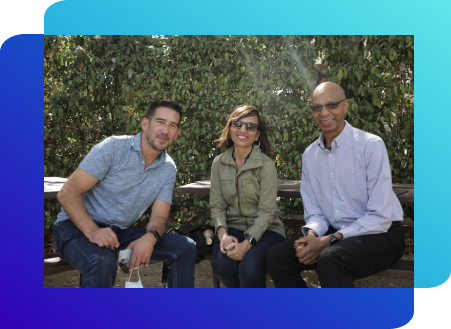
A team of Cisco engineers designing and installing a network for homeless shelters in San Jose, California, so residents can access information and resources for a better life

Cisco employee Daniel volunteering every week to take live calls with the Trevor Project to support LGBTQ+ youth experiencing crisis
Brian Tippens
Cisco’s Senior Vice President and
Chief Social Impact Officer
These past few years we've exceeded 80% employee engagement in our community impact work. Now we're finding ways to make an even bigger impact.
Key learnings
![]() Get employees involved early
Get employees involved early
New hire credit
Cisco sees some of its highest gains with new hires based on a simple campaign that provides welcome credits to new hires that can be donated to the nonprofit of their choice through the Benevity platform.
![]() After nudging employees to use their credits during their orientation and via emails and chatbots, 50% redeemed the credits.
After nudging employees to use their credits during their orientation and via emails and chatbots, 50% redeemed the credits.![]() The 50% who used their credit had 29% lower attrition than those who didn’t redeem them and 15% higher odds of promotion.
The 50% who used their credit had 29% lower attrition than those who didn’t redeem them and 15% higher odds of promotion.
![]() Get a commitment in writing
Get a commitment in writing
The Cisco Pledge
Cisco encourages employees to make an official commitment to impact by signing a pledge. Those who sign are more likely to get and stay engaged, donating their time or money — 51% take two such actions and 27% take a third action. The collective impact of employees who take second actions totals over $500,000.
![]() Keep giving back top of mind
Keep giving back top of mind
Nudge campaigns
Cisco’s nudge campaigns are simple and effective. The company found that each nudge campaign engaged about 10% of employees and served to encourage those who hadn’t previously participated to get involved. For example, for its Earth Aware Experience, they nudged people to take everyday actions such as engaging in more sustainable travel, food and water usage.
![]() Give employees the wheel
Give employees the wheel
Inclusive framework
Cisco transformed their traditional top-down social impact program into an open and democratic version that gave people a sense of ownership over the program and its success. They empowered employees to help define participation, shared data openly and used innovative Webex chatbots that delivered nearly twice the engagement of traditional mailers.
The end is just the beginning
Cisco unlocked the economic power of social impact – and they’re just getting started.
The three design principles that powered Cisco’s sprint past 80% – make it inclusive, lean into digitization and follow
the data – continue to inform its direction and growth.
The company is making its program even more inclusive by expanding the list of possible partners, exploring one-click ways to engage employees and improving the program’s administrative experience through its Benevity partnership.
Cisco’s approach sets a new standard for impact measurement and reporting – showing it’s possible to deliver positive social outcomes and correlate them with tangible business value.
No matter the sector, no matter the starting line, Cisco’s journey proves the business case for making a positive social impact.
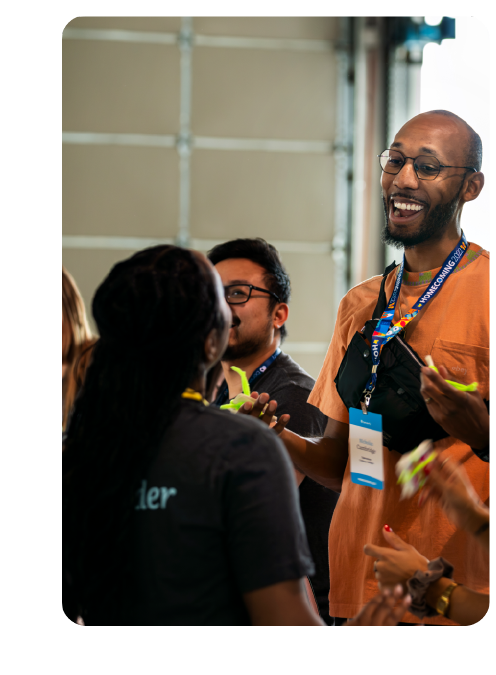
About Benevity
Benevity, a certified B corporation, is the leading global provider of social impact software, offering the only integrated suite of community investment and employee, customer and nonprofit engagement solutions.
Recognized as one of Fortune’s Impact 20, Benevity offers cloud solutions that power purpose for many iconic brands in ways that better attract, retain and engage today’s diverse workforce, embed social action into their customer experiences and positively impact their communities.
With software that is available in 22 languages, Benevity has processed more than $15 billion in donations and 79 million hours of volunteering time to support 470,000 nonprofits worldwide. The company’s solutions have also facilitated 1.3 million micro-actions and managed 845,000 grants worth $16 billion.







